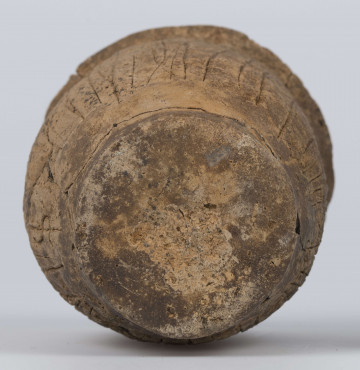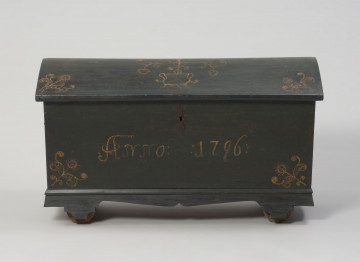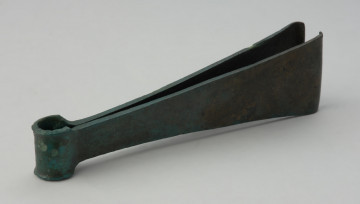
S-shaped vessel
III-V period
National Museum in Lublin
Part of the collection: Bronze Age
The pottery vessels were discovered in the cremation cemetery of the people from the Lusatian culture. The cemetery also provided such finds as bronze tongs, clay plate and six other vessels. The presented specimen is a black, shiny amphora with a pair of handles, coming from the older phase of the Early Iron Age period, so-called Hallstatt C period, ca. 750–600/550 BC. The pottery played an important role in the life of the communities from this culture, which is evidenced by a high level of pottery craft, manifested in the numerous and varied designs: apart from pots, vases, jugs, cups and amphoras, they also produced plates, lids, rattles, colanders and strainers, as well as zoomorphic vessels and stacked vessels. They were destinguished by good firing and a variety of applied ornamental techniques and motifs. The findings show also traces of painting, e.g. of geometric motifs in yellow, red, brown, white and black colors and the use of inlay, i.e. the filling of an engraved ornament with a coloured substance. Some forms of vessels allow the researchers to recognize regional groups of the Lusatian culture, e.g. a sharply-profiled amphora decorated with a groove or engraved ornament is a typical vessel found in the Western Pomeranian settlements.
Monika Witek
Author / creator
Dimensions
the entire object: height: 6 cm, width: 9 cm, diameter: 9 mm
Object type
vessel
Technique
manual modelling
Material
clay
Origin / acquisition method
legal transfer
Creation time / dating
Creation / finding place
Owner
National Museum in Szczecin
Identification number
Location / status

III-V period
National Museum in Lublin

1796
National Museum in Szczecin

around 1100 p.n.e. — 900 p.n.e.
National Museum in Szczecin
DISCOVER this TOPIC
Castle Museum in Łańcut
DISCOVER this PATH
Educational path